
Be Your Own Burbank: How Plant Breeders Facilitate Community Resilience

Contributor
- Topics: Sustainable Gardening
Summer 2023
California’s horticultural artist
Luther Burbank (1849–1926) was one of the world’s most famous plant breeders of all time. With only a high school level of education and an immense artistic vision, he developed or introduced over a thousand different kinds of plants throughout his life. Plants he bred include the Russet Burbank potato (Solanum tuberosum ‘Russet Burbank’), Shasta daisy (Leucanthemum x superbum), spineless cactus (Opuntia ficus-indica ‘Burbank Spineless’), and Santa Rosa plum (Prunus salicina ‘Santa Rosa’). He put the “glad” in Gladiolus and completely revolutionized the fresh-eating plum market. He dedicated his life to making sure that because of him “the world has better fruits and fairer flowers for all to enjoy.”
Since he was not a classically trained scientist, he did not take good pedigree notes to track his parent-offspring relationships, leading the academic community to scoff at his inventions. Instead, he relied on his memory and occasionally strips of clothing that he tore from his shirt to tag a fruit or flower he wanted to save seeds from. One can surmise that if he had taken the time to track his plant populations more adequately, he would not have had as much time to breed and introduce so many kinds of plants. Some of Burbank’s plants were direct introductions, meaning that he did not alter them in any way, but rather evaluated their characteristics then distributed them into the plant markets via catalogs or nursery retailers. Others were the results of his extensive experiments with artificial plant selection.
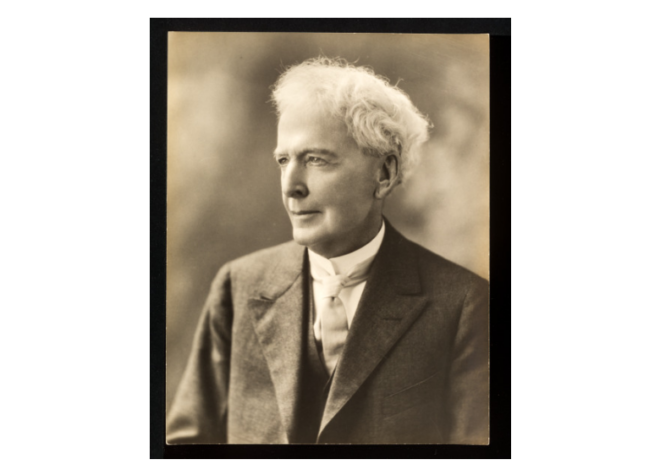
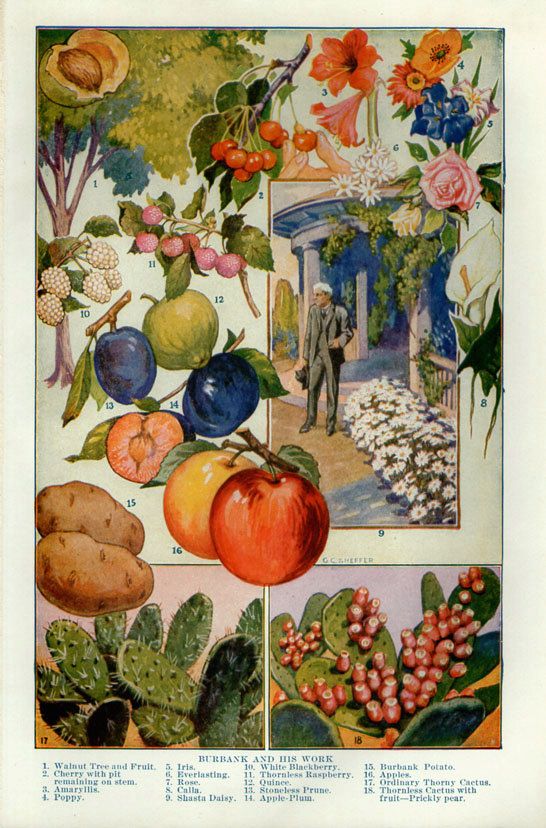
Plant breeding basics
The process of artificial plant selection is made up of two main parts: pollination and screening of offspring. Pollination includes intentionally transferring pollen from one plant to another to create an offspring. This part of the process is also called “crossing.” Sometimes it is important to know which plant is the pollen donor so both parents are controlled. In other cases, the plant is open pollinated, which means the pollen donor is anonymous, but comes from a population that was in close enough proximity to the seed-bearing plant. If this process successfully creates seeds, then offspring must be evaluated for desirable traits. Offspring that do not meet the desired criteria are discarded from the breeding population. Burbank would often save just a handful of offspring and burn the rest to remove them from his breeding populations.
The direct result of a cross between two parents is called an F1 hybrid. Some F1 hybrids have valuable traits and are directly offered for sale. These traits are collectively called a phenotype. Many sunflower, cucumber, corn, and tomato plants on the market today are F1 hybrids. They are bred annually using the exact same parental cross every time; a crop of sunflowers grown this year will be for sale in next year’s seed packet. If you tried to save the seeds from these plants to grow them the following year, they will not produce the same phenotypes you found desirable the previous season. This is because parents were intentionally crossed for the phenotype found in the F1 hybrid. When the F1 generation crosses with itself, the subsequent F2 hybrid will have attributes that are more like one of the original parents.
In some cases, an F1 hybrid has undesirable characteristics. For example, if you’ve ever grown a pumpkin and a zucchini too close together and tried to save seeds from them to plant the following year, you inadvertently created an open-pollinated F1 hybrid—an unintentional cross between the pumpkin and zucchini. That F1 hybrid in this case is the dreaded “pumpkini,” a hard, inedible log of a fruit that is neither pumpkin nor zucchini, but rather a mix of both. Knowing whether a plant will hybridize on its own in your space is incredibly important for saving seeds and driving artificial selection.
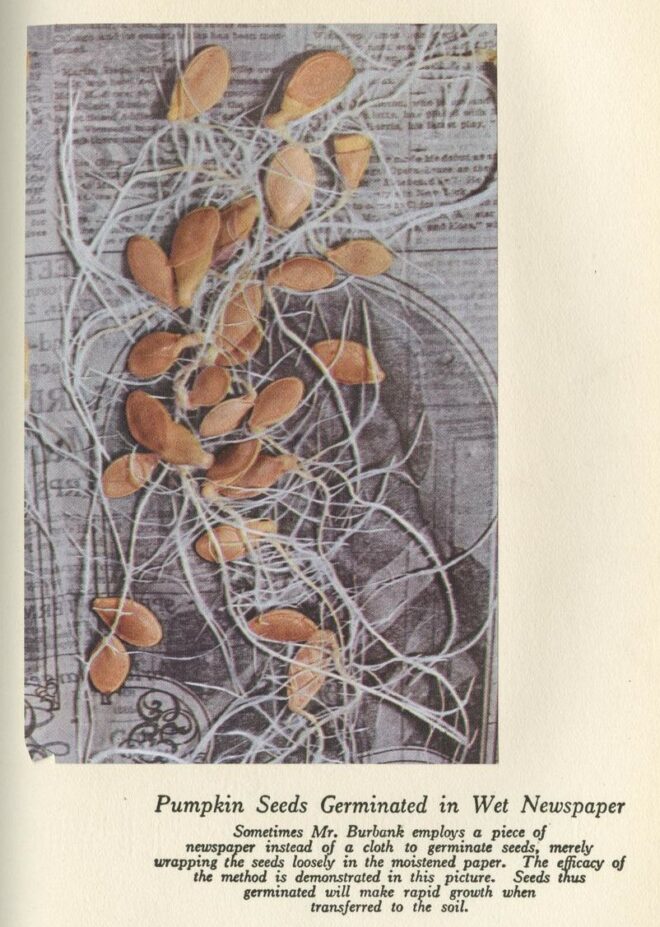
The more genetically distant the parents of a cross are, the wider the range of variation in the generations that follow. The more similar the parents are, the less variation in the offspring. Most plants can be bred within the same species. This is also known as intraspecific hybridization. This would be like shuffling two different brands of playing cards together. There will be some small changes in appearance, but overall, the play of the game is the same. Burbank primarily experimented with interspecific hybridization, crossing two completely different species within the same genus. Think of it as shuffling a deck of playing cards with a deck of uno cards. This kind of hybridization is not as successful at creating offspring, but when offspring are generated, it is more successful at introducing novel characteristics. One interspecific hybrid you may be familiar with is the plumcot. Burbank claimed to have crossed a plum and an apricot and was largely rejected by the scientific community due to his lack of documentation. It wasn’t until forty years after his death when Floyd Zaiger also made the cross that Burbank’s work was taken seriously. Now you can purchase and enjoy plumcots, pluots, apriums, pluerries, and nectaplums distributed through many retail grocery stores.
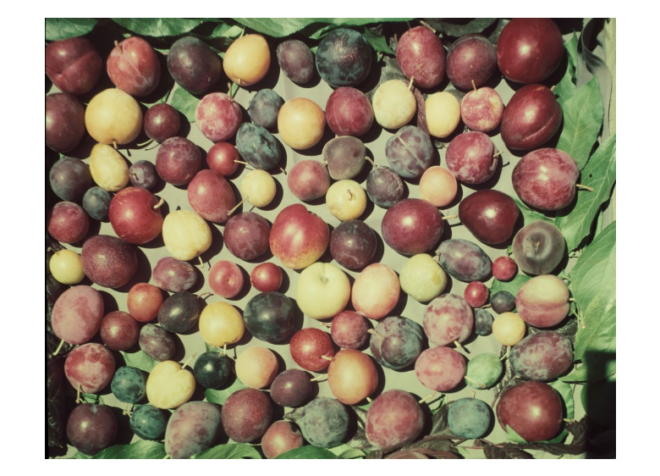
Burbank’s posthumous plant patents
When Luther Burbank was alive, there were no plant patents. He spent many years advocating for the patenting of life because it was hard to make money on his novel creations. After his death, Thomas Edison championed the cause, speculating that plant patents would lead to more plant inventors if they could claim intellectual rights to monetize their creations. In 1930, Congress agreed with Edison to allow the patenting of plant material. Some of the earliest plant patents are for Burbank’s roses, plums, and peaches, and were awarded to him posthumously. Despite the culmination of his life’s work inspiring legislation for patenting plants, it is entirely possible that Burbank would not have access to the plant patent industry of today because of his lack of scientific rigor, poor recordkeeping, and shallow academic standing.
The creation of new cultivars for commercial introduction takes time, technology, and monetary resources. One must prove their cultivar is fundamentally unique from others that already exist. Today, the most common way to determine if a plant is distinct is to include genomic data in the patent application. To save time and money, plants in breeding programs are screened for the desired genetic combinations. Plants with the favorable genome sequences are kept in the breeding program and those without the combinations are discarded. This often occurs in the seed or seedling phase. This does not mean the plants are genetically engineered; even organic programs use this tool to speed up the process of phenotyping their offspring. Because genotyping progeny is often prohibitively expensive for hobbyist breeders, this valuable tool alienates backyard growers with big ideas who do not have access to the technology necessary to patent life. Large companies and academic institutions are more likely to introduce new cultivars commercially because they already have the infrastructure to do so.
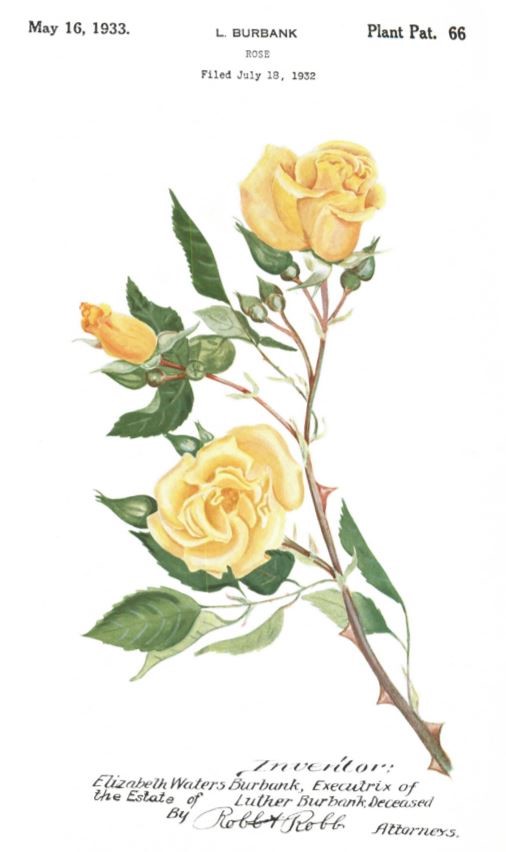
Burbank’s social theories
While Burbank is primarily known for his extensive contributions to the field of horticulture, it is important to note that he was a participant in the eugenics movement of the early 1900s. He attempted to apply plant breeding principles to human populations with ideas that are ethically questionable. Contrary to his contemporaries in the eugenics movement, Burbank’s view encouraged interracial marriage, a woman’s right to choose, and providing financial support for persons with disabilities, as is referenced in his singular essay published on the matter, The Training of the Human Plant. He advocated for school lunch programs, claiming that the environment in which one is raised will have a significant impact on who that person becomes. Burbank was adamant that his ideas be made of free will as a personal choice, and not by a government, regime, or scientific body. However, his view also included problematic components such as preventing those deemed morally unfit, degenerate, or physically unwell from reproducing and referring to Indigenous peoples as “savages,” equating them to a “wild type.” Ultimately, the eugenics movement committed many atrocities, including forced sterilization, and it is still championed by white supremacist groups, to which Burbank was opposed.
Plant breeding for gardeners
There are many purposes for artificial selection, including disease or drought resistance, increased yield, better texture or flavor, ease of harvest, color, and fragrance. The process occurs gradually over time and generations, and often is the culmination of many years of trial and error. Even if you aren’t likely to breed plants with meticulous note keeping, stringent breeding goals, and intention, you may be passively breeding plants by simply saving seeds and replanting them the following season or allowing a plant to go to seed on its own in your yard.
The first phenotype you are unconsciously selecting for is the ability for the plant to reproduce and form viable seeds. If there are no seeds, there is nothing to save. The next trait you may be inadvertently selecting for is disease resistance. Because it is a good practice to collect seeds from plants that are not exhibiting disease symptoms, saving seeds from healthy plants pushes the phenotype of your population towards the direction of disease resistance. Although this does not ensure your plants are completely disease resistant, it does start the trend in that direction. This kind of artificial selection is called directional selection.
If the seeds you’ve collected turn into plants that do not meet your criteria, you may discard them or choose a different plant to save seeds from the next time. For example, perhaps you grew a beautiful single-headed, red sunflower one year and decided to save the seeds. The next year when you planted the seeds, many of your plants produced multi-headed, yellow flowers. If your goal was more red, single flowers, you would only save seeds from the single, red plants and discard the seeds from the multi-headed, yellow sunflowers. This is an active form of artificial selection.
Oregon State University Professor of Agricultural and Life Sciences Dr. Ryan Contreras notes that backyard breeders have been able to create some incredible crosses in important landscape plants like rhododendrons.
“The hobbyist breeder is breeding for these massive trusses or inflorescences they can harvest and take to their local chapter of the Rhododendron Society for competition. A professional breeder may take that incredible inflorescence and put it on a more compact plant or one that works well in production breeding for Phytophthora resistance. It’s part of the evolution of our industry to transition from a hobby … to something that works in production where they’re going to make 15,000 of them.”
Plant breeding for research and profit
While fiddling with phenotypes in one’s backyard may result in some favorable combinations to perpetuate, it is important to note the impactful role academic and private commercial breeding programs play in our food security and gardening endeavors. To get the perspective of a professional with experience in the academic, public, and private plant breeding sectors, I reached out to a former colleague from UC Davis, solanaceous plant scientist at Unfold Bio, Dr. Saarah Kuzay. Here’s what she had to say:
“Plant breeding programs, publicly and privately funded, are long-term sources of creative innovations. These innovations take so many forms including new products and solutions, whether that’s developing new kinds of food, feed, fiber, fuel, pharmaceuticals, building materials, fun (e.g. turf grass), aesthetics (e.g. flowers), mining/scrubbing our environment of toxins and waste, among many others. These plant-based innovations are rooted in our culture and society’s dependency on plants. Our world would be an unrecognizable place without plants and our ability to harness plants is what made human civilization possible.
All of this should be a very compelling argument for supporting plant breeding programs, and yet this argument is not enough to get public funding, venture capital, or other forms of investment. It’s easy to hark on altruistic statements such as ‘we breed plants to ensure global food security for future generations,’ but backing argument with a sound business plan is very difficult. Developing a new variety or product takes a long time, 5–10 years for annual plants and 10-plus years for perennial plants. Earning revenue, much less profit, from seed sales is hard and it takes many years of consistent success and sales to get a return on investment.
So, why do we keep playing this plant breeding game? Why do we even bother? I can’t answer that question on behalf of big ag corporations, university breeding programs, or small seed companies. But, for me, it’s because I enjoy working at the frontier where biology and engineering intersect. Every new engineering innovation, whether that’s computer vision models or lighting technology, is an opportunity to develop a new kind of plant that can interact with that technology. Since plants are so fundamental to our environment, nutrition, and day-to-day life, I think we need to update our plants to keep up with the engineering innovations we depend on. More importantly, pairing plant innovations with engineering innovations allows us to come up with new and unexpected solutions for today’s challenges. For that reason alone, we will always need new plants innovations and hence always need plant breeding programs.
Right now, I work as a plant scientist who develops ‘plant prototypes’ for vertical farms. I convert our well-loved large, sprawling plants designed to survive the stresses of the outdoors into small indoor plants that can thrive inside a 100 percent artificial lighting and soil-less cultivation. At times I feel like a sci-fi scientist. In many ways, I am redesigning these plants that evolved to be survivors of the outdoors, to be more like symbionts of a mechanical host.”
Kuzay’s creations have applications for cultivating food in marginal land spaces, increasing the ease of harvestability, and even cultivating food in space!
Plant breeding for climate preparedness
In addition to breeding plants for food sustainability, scientists are developing climate-conscious cultivars for landscape use. The breeding goals for these programs focus on phenotypic plasticity in perennial plants, or their ability to withstand dramatic shifts in the weather they experience on an annual basis. In some cases, plants are being pushed to the limits for withstanding drought. In other cases, they need to tolerate erratic cold spurts followed by dramatic heat waves, or even periods of water inundation, all while enhancing the beauty of our surroundings and providing ecosystem services to natural systems.
Climate Ready Landscape Plants supports the role of plant breeders by trialing commercial cultivars in diverse habitats. This project is a massive USDA-funded collaborative effort between six western universities and institutions that are pushing some of our favorite landscape all-stars to their limits by seeing just how little water they need to thrive and survive from Utah to Washington. The results of these experiments are helping inform both breeders and consumers of these plants to ensure that our cultivated landscapes are robust and resilient.
Oregon State University Assistant Professor of Nursery Production Dr. Lloyd L Nackley, who has been involved with this project, sees this work as essential and imperative.
“As a scientific community, and as a culture, we’ve been aware that climate change is something to be addressed for the past 30 years, 40 years. There’ve been alarm bells and so plant breeders have been focusing on this already. Our results are pointing to the need for plant breeders to be developing resilient plants that can be tolerant of temperature extremes as well as these moisture extremes. There are already plants in the pipeline and trials like ours that are on these huge latitudinal gradients covering the West, they’re providing the empirical evidence.”
The efforts of the Climate Ready Landscape Plants program are inform the Water Use Classification of Landscape Species database (WUCOLS), an accessible tool for landscapers and homeowners to use to ensure they are planting and watering smarter in the face of climate change.
Unintended consequences of plant breeding
For all his merits, Luther Burbank was not without his follies. Some of the plants he bred were so successful, they proliferated throughout the Pacific Northwest, devastating native ecosystems. Two of his most egregious introductions are the European mistletoe (Viscum album) and the Himalayan blackberry (Rubus armeniacus). Luther Burbank brought the European mistletoe to his Sebastopol, California, property around 1900 for its medicinal properties and uses as a decorative holiday plant. He could not have imagined how widely popular this plant would become with local birds moving this parasitic plant over 200 miles from the point of origin to a wide variety of native and non-native hosts. Similarly, birds and other wildlife spread the giant, delicious berries of the Himalayan blackberry through waterways where they often out-compete native vegetation and wreak havoc on the land of homeowners.
You may also accidentally breed undesirable attributes into plants. For example, if you find yourself weeding in the garden, chances are you’ll miss a few plants. Those missed plants will reproduce and become next year’s weeds. If you were able to remove the tall plants but didn’t notice the shorter ones hiding in your garden, the shorter plants will live on to reproduce. In this case, you have selected for shorter height. Maybe you got out to the garden later than you wanted, and were able to remove most of the plants, but a few went to seed before you could pull them out. In that case, you’ve selected your weeds for early ripening. Perhaps you brought in a load of compost to add to your plot, and from it emerged a plant you’ve never seen before. In this case, the plant was naturally selected to withstand the high temperatures achieved in a compost facility (or their compost wasn’t hot enough to kill off the seeds). All these cases are part of a vast array of evolutionarily successful strategies plants have accumulated over many years of time and selection, some natural and some artificial. Plants that are weedy tend to have seed prolifically, make sacrificial parts, thrive in poor soil conditions, and reproduce asexually. It is important to recognize these strategies when making land management decisions for how to remove undesirable plants; you need to understand that your choices are synonymous with plant breeding goals.
Community resilience
The act of saving seeds grown in your space increases your community’s resilience over time because you are gradually adapting your favorite cultivars to your growing conditions. Since you are unlikely to continue saving seeds from cultivars that have undesirable phenotypes like poor taste or low yield, traits will accumulate in the populations of the plants you continue to grow season after season. Additionally, saving your own seeds decreases your reliance on big agricultural systems. Sharing saved seeds with others in your community creates robust, localized agriculture, putting power back into the hands of individuals over corporations.
Complications and tips for seed savers
It is a good idea to keep some seed from each season in case you need to revert to a previous generation of seed, though it is important to note the viability of those seeds will wane over time depending on storage methods, resources inside the seed, and germination requirements. Saving seeds is fun and enjoyable but takes a little patience. The most viable seeds will come from plants that have fully matured flowers. This means you’ll have to put up with a little browning before deadheading plants like salvias, zinnias, hollyhocks, or sunflowers. Once the flowers have turned completely brown, separate the seeds from any other bits of plant material, especially if the seed has a fleshy fruit surrounding it. They’ll need to dry a little before going into storage. Keep them away from animals that eat seeds like birds or mice during this process. Seeds can be bagged in paper bags, and then stored collectively in a plastic container with a few packets of silica gel to decrease the humidity. Be sure to look up the plant’s specific germination requirements when the time comes to sow the seeds.
Get involved
Many local libraries have adopted seed lending programs as a community resource where people can acquire free, locally collected seeds. You can get involved by either growing or contributing seeds for their collection. They provide opportunities for community members to share their locally adapted, biologically diverse seeds. They have lots of helpful tips and tricks for seed saving and even some helpful information on the kinds of plants that you can or cannot reliably breed in your own backyard. You can get involved by either growing or contributing seeds for their collection. If your local library does not have a community seed exchange, ask them to see if they are willing or able to expand their programming.
Resources
This article was sponsored by: Pacific Nurseries


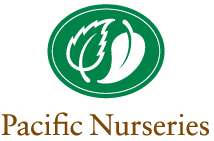







Responses